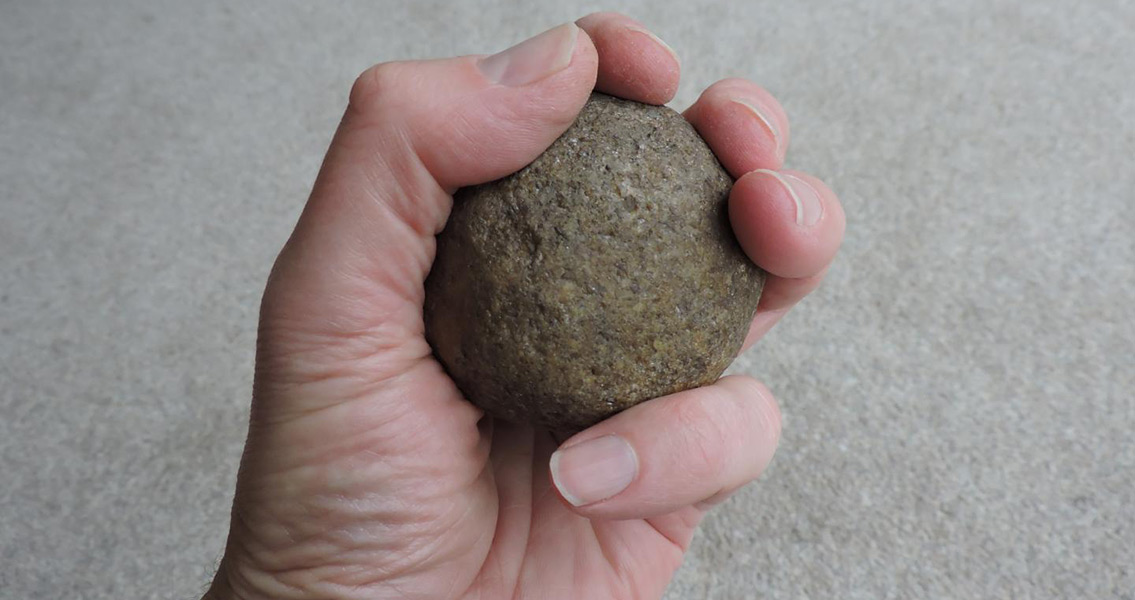<![CDATA[A new research study has found that a collection of stone spheroids dating back to up to 1.8 million years ago could have been used as weapons for hunting, and not just tools as has been suggested previously. Nearly thirty years ago a series of mysterious spherical stones were discovered at the Cave of Hearths: a major archaeological site in South Africa's Makapan Valley. The stone objects were soon dated to between 1.8 million and 70,000 years old, but for almost three decades scientists have been puzzled about their purpose. Now, a multidisciplinary team including kinesologists, psychologists and archaeologists have shed new light on this mystery. Their findings are published in the journal Science Reports. The team combined knowledge about how modern humans perceive an object’s ‘throwing affordance’ with mathematical analysis of the objects’ effectiveness as projectiles, to reach their conclusion. “Our study suggests that the throwing of stones played a key role in the evolution of hunting,” said Indianna University Bloomington professor Geoffrey Bingham, an author of the study, in a press release. “We don’t think that throwing is the sole, or even primary, function of these spheroids, but these results show that this function is an option that warrants reconsidering as a potential use for this long-lived, multipurpose tool.” A theoretical framework and computational tools developed at the Perception/Action lab at IU were the basis for the team’s conclusions. Bingham, the lab’s director, investigates human coordinated action and perceptual abilities. Part of this involves looking at throwing affordance: selecting the best object in terms of size, weight and shape for throwing at the greatest speed and distance, and causing the most damage. 55 ball shaped objects from the South African site were analysed in the lab. The team found that 81 percent of the stone balls were the optimal size, weight and shape to hit a target 25 metres away. Each of the stones is about the size of a tennis ball, but significantly heavier. In addition, the team simulated the motion the objects would undergo if thrown by an expert and the probability of causing damage to medium sized prey, such as an impala. Previous research on biomechanics and perception has shown that a human’s shoulder joint and visual perception are uniquely specialised for throwing objects at targets around 30 metres away. “Humans are the only animals — the only primates even — with that talent,” Bingham explained. “We can throw something to hit something else — like a quarterback throwing to the running back all the way down the field. That’s how in large measure we survived the ice ages. The available food was largely on hoof, or it was ‘mega-fauna,’ such as a mammoth. You don’t want to get close to them.” According to the team’s paper, most of the objects studied had weights that produce optimal levels of damage when thrown at prey. This puts serious doubt on the idea that they had been fashioned solely as simple percussive tools, which tend to be made to be as heavy as possible. “Imagine a human, searching for an object to throw so as to cause the most damage possible to potential prey or a competitor,” said Andrew Wilson of Beckett Leeds University in England, the study’s lead author. “This is a perceptual task: the person needs to perceive throwing-relevant properties of objects and be able to discriminate between objects that vary in those properties.” Bingham, along with former students and other colleagues, has been studying the complex mechanics of throwing for decades. He is in little doubt as to how significant it has been to human evolution. “The ability to throw great distances was not a small thing. It was how we got lunch.” For more information: www.nature.com Image courtesy of Judy Maguire]]>
Mysterious Stone Spheroids Were Hunting Weapons
